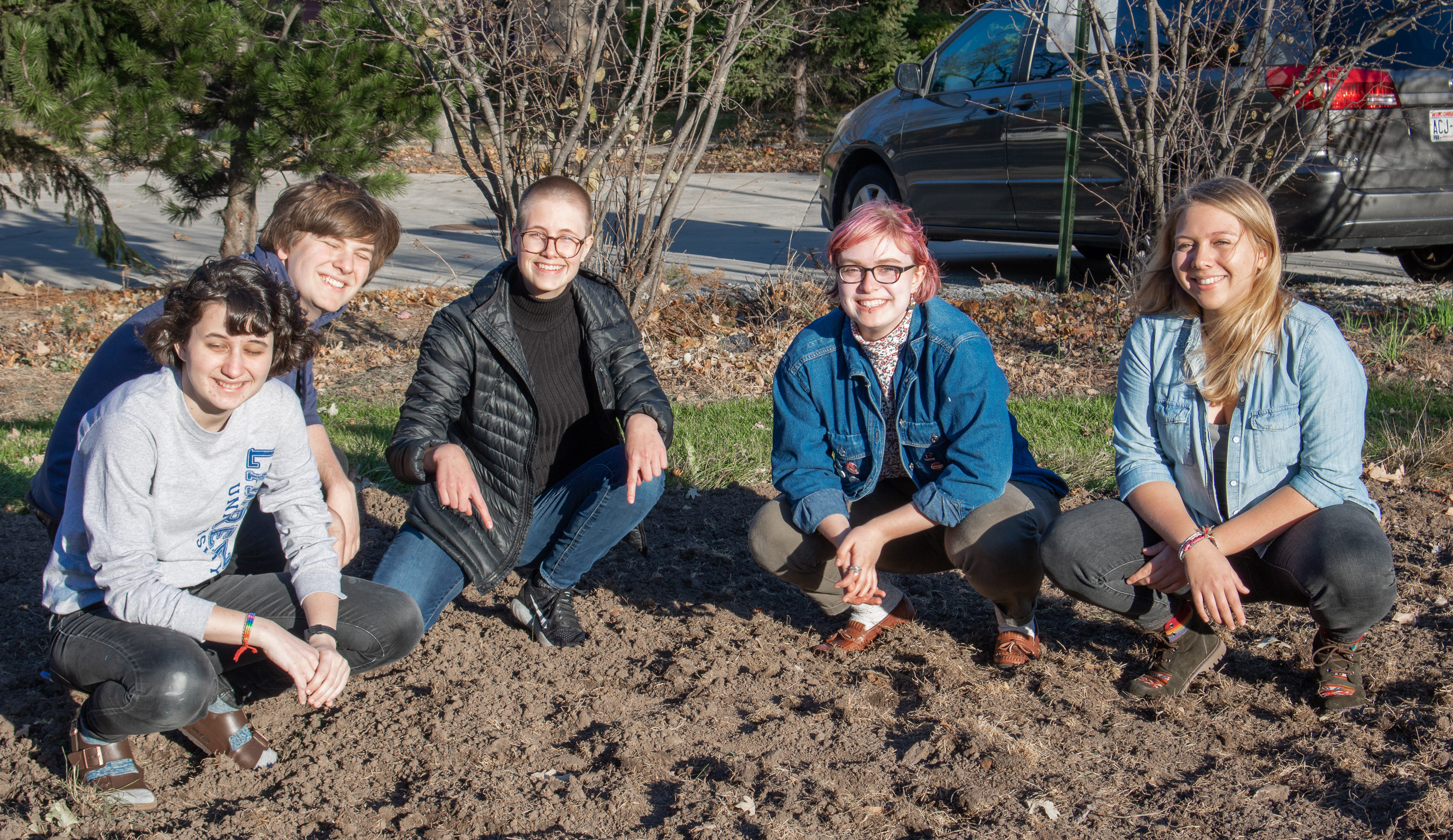Bird and Nature Club.
Photo by Nidi Garcia.
The grassy area behind Sage next to the shuttle parking lot is going through a change. Claire Zimmerman, along with the rest of the Bird and Nature Club, will be breaking ground on a brand new pollinator garden in this area in the near future. When asked about this project, Zimmerman stated, “Bird and Nature Club’s goal is to make a garden that can support the needs of multiple local pollinators, especially those in serious decline, such as Monarch Butterflies and Rusty Patched Bumble Bees…This garden will hopefully provide some shelter and pollen to our local pollinators. I am working on this project as a leader of Bird and Nature Club with Claudia Rohr, Alex Dahl, Allegra Taylor, Miriam Thew Forrester, and Jessica Robyns, with help from facility services, various faculty members, and Kelsey McCormick through the sustainability fund.”
With the highly publicized decline of the bee in recent years, more and more groups have been building pollinator gardens to try to save pollinators while they still can. Zimmerman mentions a region wide initiative to install pollinator gardens saying, “the Appleton Pollinator Project is basically my project times 1000, and their work helps to promote pollinator biodiversity throughout the Fox Valley!” A pollinator garden is generally a garden with plants especially planted to attract pollinating insects. This usually involves many types of nectar producing flowers, shelters for pollinators, no pesticides and having similar flowers close to one another.
Zimmerman notes, “I got the idea when a Lawrence University alumnus Caitlin Williamson visited last winter and had lunch with my conservation biology class. Williamson has pursued a career in conservation and is the Director of Conservation Projects for the Natural Resources Foundation of Wisconsin. When I asked her how we could promote conservation on campus, she emphasized the need for pollinator gardens with milkweed to aid monarch butterflies.”
In their mission to aid local pollinators, Zimmerman and the Bird and Nature Club were pointed towards the Student Sustainability Fund to provide funding for their project. They recently were able to submit an application and get it reviewed and approved by the Sustainability Steering Committee (co-chaired by Sustainability Coordinator Kelsey McCormick and Professor of Geology Jeff Clark) and will be able to begin work on actually creating the pollinator garden soon. Claire remarks, “We’re using the fund to buy the equipment and seeds for the garden. Without the help of this fund, we would have a hard time getting the resources we need to make this a successful project.” The Bird and Nature Club is planting seeds in the garden in the fall and letting them germinate over winter. If you’re looking forward to seeing plants, they’re hoping to see the beginning of sprouts in May when they finalize the design.
If the pollinator garden is something you would be interested being involved with, then you’re in luck! Zimmerman says, “Any and all students are welcome to help out, and some already have! In order to get involved, message me or Bird and Nature Club to join our mailing list to learn about our garden events or to ask for a bigger role in helping with the garden. We’ve had a lot of support from other students, who have either offered their guidance or offered to help. We are hoping to work with Biodiversity and Sustainability Club to promote conservation-oriented gardens on campus.”
This pollinator garden is yet another example of Lawrence being a living laboratory for students and faculty alike to develop and implement projects to increase sustainability efforts on campus.
If you have an idea to make Lawrence more sustainable and would like the opportunity to receive funding by the Sustainability Steering Committee, go to the “Sustainable Lawrence” page on the Lawrence website and click “Apply to the Student Sustainability Fund.”

